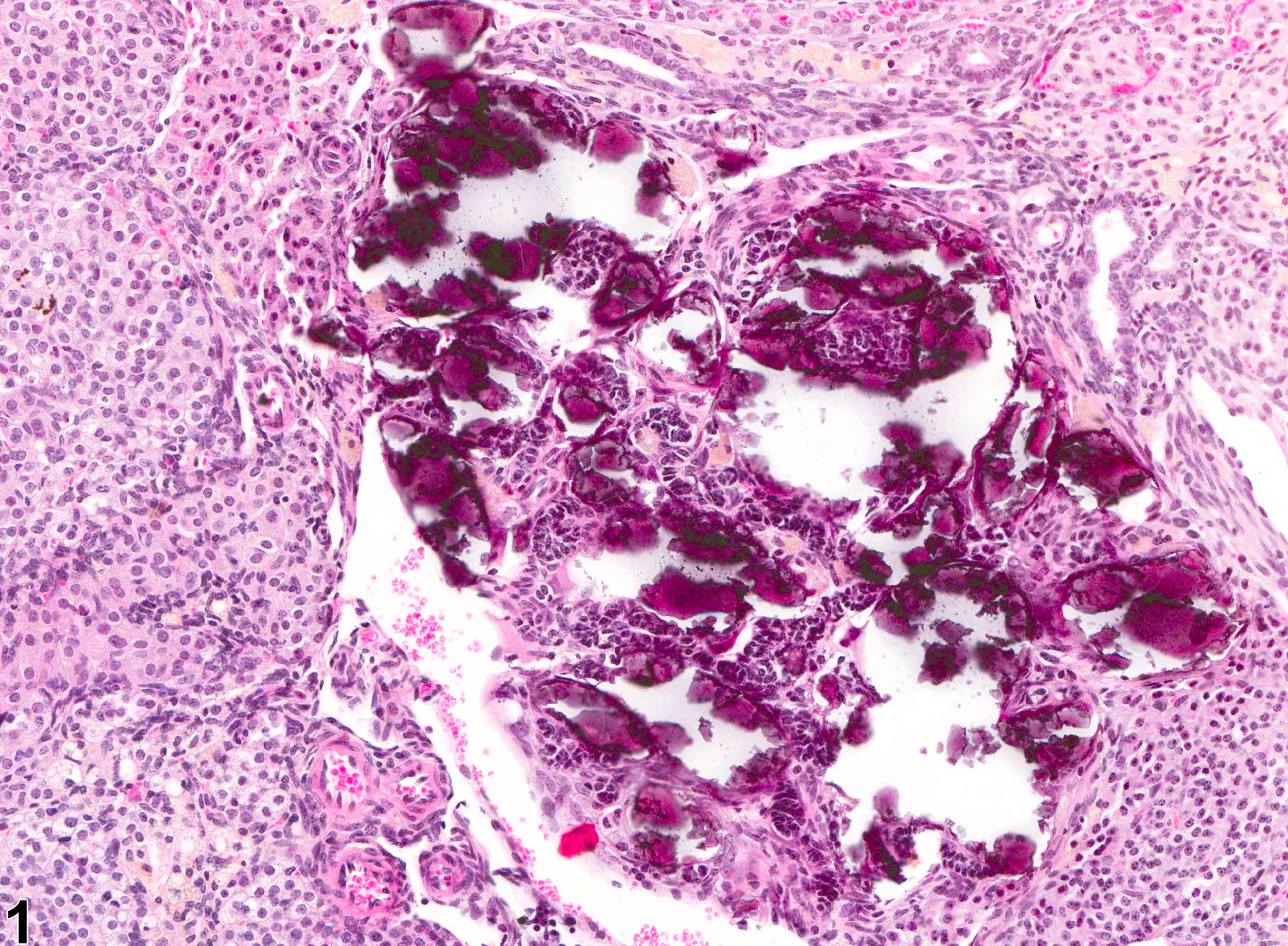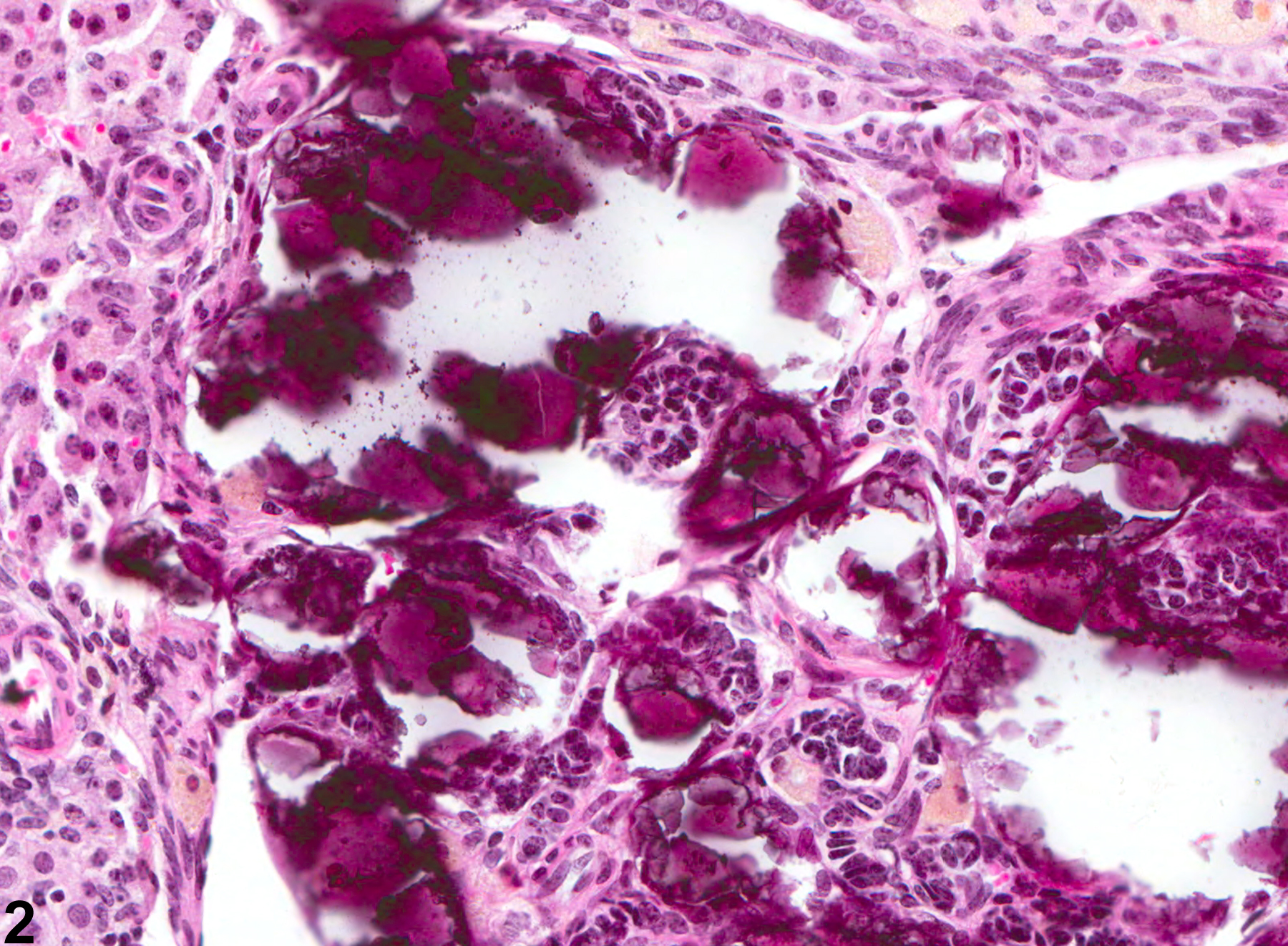Reproductive System, Female
Ovary - Mineral
Narrative
Ovarian mineralization (Figure 1 and Figure 2) is usually secondary to cell damage or necrosis (i.e., dystrophic mineralization). Dystrophic mineralization of the ovary has been reported in rats and mice. Ovarian mineralization can be seen in corpora lutea as part of normal atresia; however, it has also been reported in association with chemically induced ovarian follicular or corpora lutea atresia. Metastatic mineralization is uncommon in the ovaries of mice and rats.
Ovary - Mineral should be diagnosed and graded when there is no evidence of necrosis or inflammation. If it is secondary to necrosis or inflammation, and is unusually severe, it may be diagnosed concurrently with the necrosis or inflammation if the pathologist feels it is warranted. The study pathologist should attempt to identify the underlying cause of the lesion if mineral is treatment related. Mineralization should not be diagnosed if it occurs in a thrombus.
Davis BJ, Dixon D, Herbert RA. 1999. Ovary, oviduct, uterus, cervix and vagina. In: Pathology of the Mouse: Reference and Atlas (Maronpot RR, Boorman GA, Gaul BW, eds). Cache River Press, Vienna, IL, 409-444.
Montgomery CA, Alison RH. 1987. Non-neoplastic lesions of the ovary in Fischer 344 rats and B6C3F1 mice. Environ Health Perspect 73:53-75.
Abstract: https://www.ncbi.nlm.nih.gov/pmc/articles/PMC1474552/National Toxicology Program. 1994. NTP TR-437. Toxicology and Carcinogenesis Studies of Hexachlorocyclopentadiene (CAS No. 77-47-4) in F344/N Rats and B6C3F1 Mice (Inhalation Studies). NTP, Research Triangle Park, NC.
Abstract: https://ntp.niehs.nih.gov/go/6018National Toxicology Program. 2006. NTP TR-533. Toxicology and Carcinogenesis Studies of Benzophenone (CAS No. 119-61-9) in F344/N Rats and B6C3F1 Mice (Feed Studies). NTP, Research Triangle Park, NC.
Abstract: https://ntp.niehs.nih.gov/go/20475Patyna S, Arrigoni C, Terron A, Kim TW, Heward JK, Vonderfecht SL, Denlinger R, Turnquist SE, Evering W. 2008. Nonclinical safety evaluation of sunitinib: A potent inhibitor of VEGF, PDGF, KIT, FLT3, and RET receptors. Toxicol Pathol 36:905-916.
Abstract: https://www.ncbi.nlm.nih.gov/pubmed/18981453
Ovary - Mineral in a female B6C3F1/N mouse from a chronic study. Mineral deposition is present in the ovarian parenchyma.



